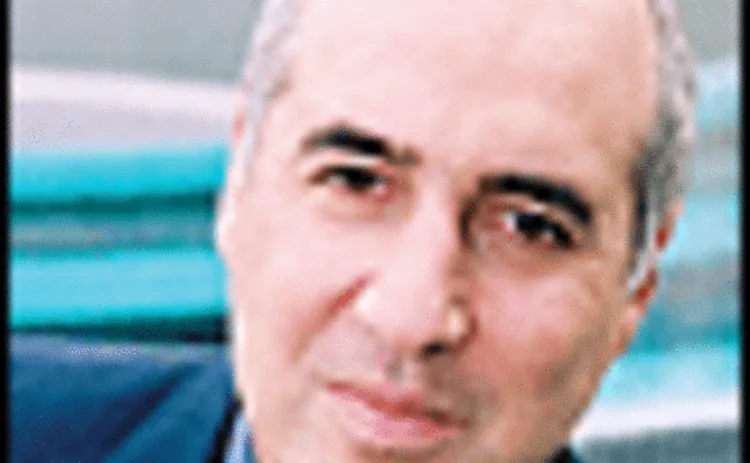
Hard targets
Hedge funds coasted throughout 2003, notching up healthy returns with aminimum of fuss. But the cakewalk looks set to grind to a halt this year, withmuch of the high-yield market priced at par or above. Suzanne Miller reports

Over the past year, making money in US credit markets such as high yield and distressed debt has been something like fishing in a well-stocked goldfish bowl. All hedge fund and mutual fund investors have had to do is dangle a line and reel in the catch.
Almost everyone has a story of how easy it has been to make money in a market that has boasted record low interest rates through the first half of 2003, in addition to a rebound from last year’s market rout. One high-yield analyst says a multi-billion dollar US hedge fund threw $250 million at a pool of low-rated high-yield debt in 2003 – and with little due diligence at that – figuring if 5% of the pool defaulted they would still be in the money. They were indeed, raking in a reported 40% in returns.
“It was a remarkable year and I don’t think it’s going to be repeated,” says Steve Persky, managing partner of Dalton Investments, a Los Angeles-based hedge fund which has $280 million in assets under management, $90 million of which is in distressed debt. “For one thing we won’t have the same dramatic record contraction of spreads and record supply next year.”
Persky has not done so badly himself. His fund, which specializes among other things in distressed debt and emerging markets, returned 34% net of fees to investors over 2003. Persky has been helped by the fact that spreads in sectors like high yield, for instance, have contracted more than 400 basis points.
Hedge funds specializing in distressed debt rose 21.5% in 2003 (to mid-December at time of press) while those focusing on high-yield debt returned 16%, according to the CSFB/Tremont distressed index. Overall, the Merrill Lynch Global High Yield Index showed returns of 27% in 2003. The last time returns looked this good was in 1991, when investors saw returns rocket by 39%. Issuance has also been stratospheric: investors have been chasing this richer-yielding debt by pouring money into funds that dine on these assets. According to Tremont, $545 million flowed into 2,662 hedge funds through the third quarter of 2003, with the bulk of that money pulsing through the gates in the last three months of that period.
The trick for investors like Persky is what to do when interest rates begin to rise and the huge opportunities that have bubbled to the surface in asset classes such as high yield and distressed debt become exhausted.
Slim pickings
Over the past few months a number of pension fund advisors have warned clients to stay away from high yield because it has been looking overdone. Yet since September, when a number of analysts and managers made that call, high-yield spreads have contracted another 100 basis points. “Money keeps coming in because yields are so low on other fixed-income products,” says Roger King, analyst with CreditSights. “Now 72% or more of the high-yield market is priced at par or above. Pickings are getting thinner.”
This is creating big challenges for hedge fund managers who have relied on the easy money of the past year. “We’re telling our limited partners that next year we’re going to have to work twice as hard for half the returns,” says one manager of a distressed fund based in Connecticut. The work will be all the harder because everyone has raised a lot of extra money that will be competing to generate the kind of double-digit returns that characterized last year.
“We’re on the top of a ski jump and there’s going to be a reckoning with credit strategies,” warns George Van, chairman of Van Hedge Fund Advisors, a firm that tracks the hedge fund industry.
Hedge funds and those specialists who cater to the industry say there are a number of ways to surf the choppier waters many forecast for the months ahead. Some, for instance, anticipate the return of old-fashioned market shorting – a loser’s game last year because the market was basically a one-way trip up the ladder. Still others, especially niche players, will be able to pick off select credits as the obvious opportunities recede.
More interestingly, a new breed of hedge fund managers is emerging: those who specialize in arbitraging the capital structures of companies. Capital structure arbitrage can run the gamut of strategies, from betting bonds off equities in a single company name to playing up and down different debt classes, also in the same capital structure.
Many fund managers are also looking more closely at illiquid markets in credit derivatives, particularly credit default swaps and illiquid sectors of the high-yield market. Some believe they are the future liquidity masters of the credit universe. A number of these managers have been defecting from the top trading desks of Wall Street, drawn by the Wild West allure of hedge fund innovation.
“When people talk about capacity constraint in the hedge fund universe, capacity is limited by the US financial market’s ability to innovate,” says Cynthia Nicoll, senior vice president of investment management at Tremont Capital Management. “When people ask, ‘What’s the next game?’, we say, ‘Credit is going to be the next big story.’”
Nicoll says those defecting from Wall Street to hedge funds “are those trading all facets of the debt market. They understand all the actors – the buyers and sellers of the market. They deal in CDOs, credit default swaps, high yield, and investment-grade bonds. They understand all the rules and are in a position to make decent money,” she says.
She mentions one fund, for instance, that was launched by two investment bankers, one who ran a well-respected high-yield syndicate and CDO desk, and the other who ran a high-yield trading desk. She says they have a team of “three to four top-flight high-yield analysts” and invest 30% of available funds in “tactical” high-yield bond trading – meaning they have the freedom to move as quickly in and out of positions as need be.
“This way they always know where the market is and have a shorter trading time: entry and exit are key in high yield,” Nicoll says. She adds that speedier trading is possible now, in part because the repo market has deepened.
Tim Kasta, a managing director at credit risk consultants Moody’s KMV, is just as optimistic as Nicoll. “I think hedge funds will quickly take over from banks as leaders in trading credit and excelling in risk management. Banks are losing a lot of talent to these guys. I think hedge funds are to banks in the credit markets what start-ups were to the technology industry in the 1990s. The Vanguards of the credit funds have yet to emerge,” he says.
Take credit default swaps. While the number of dealers has grown from just three a few years ago to 18, the market is still emerging. While investors can get a few thousand quotes on credit derivatives, only 300 or so will represent actual transactions, not simply bid offers. This means there is not a lot of price transparency on those names outside this universe of 300. Moreover, the liquidity on these 300 names tends to be heavily focused on investment grade versus non-investment grade, Kasta says. “There’s a lot of value in illiquid credits because there’s a lot of price discovery,” he says.
Nicoll says hedge funds are devoting ever-more resources to exploiting the credit markets. “There are players out there now able to collect data on bonds and swaps from these CDS dealers who have the resources to work a company-specific credit curve,” she says. Kasta of Moody’s adds: “We are tailoring our tools for hedge fund managers because we think they’re going to be the leaders.”
There are skeptics who believe that opportunities for hedge funds will dry up in a more stable market. But truth is, there will always be inefficiencies to exploit. For instance, numerous bondholders are mandated to sell holdings when credits fall below a certain rating – even if the credit remains attractive.
Angling for returns
For those who are not interested in capital structure arbitraging, life will be something of a fishing expedition next year – and shorting will be one of the rods to take along. “Next year the market could be very interesting for hedge funds going back to the classic mode of going long those issues you like and short those you don’t like. It will be a more selective market,” says George Muzinich, president of investment firm Muzinich & Co, which has $4.4 billion in assets under management.
Six months ago, Muzinich’s group launched its first hedge fund valued at under $100 million and its first to be exclusively focused on the high-yield market. The fund is called Hedgeyield and is managed by John Ingallinera, who was formerly head of high-yield trading at Lehman Brothers.
“Instead of sitting passively to watch one of our bonds go down in price, we want to be active,” Muzinich says. Which means, if doomsayers are right and the high-yield market starts getting hit by downgrades or defaults in 2004, they will be ready. The new fund will enable the group to short bonds they do not like: something that the group’s long strategy on the rest of the assets under management – mostly higher-quality high yield – does not allow.
Persky of Dalton Investments looks forward to a similar bout of shorting sport. “Next year there will be a lot of money to be made on the short side. A lot of people are issuing debt and it’s questionable if all of them can repay, so we’re seeing the seeds of distressed paper,” he says.
As a warm-up, Persky has been unwinding long positions. Through October the fund lost 8% on the short side and earned 42% on the long side. But from December 2002 to the end of November 2003, the fund had reduced its net long exposure from 60% to 40%. Meanwhile, Persky has been dropping in at plenty of high-yield roadshows to identify future carrion. “I go to roadshows today not because I want to buy the issues but just so when it starts to get interesting later, I’ll already know what’s going on.”
Some might say this kind of selective bargain-hunting is the luxury – or necessity – of the smaller funds which live more on the edge than firms that have grown to multi-billion dollar sizes these past few years. The big funds may even end up having a tougher time than the smaller funds that can move among smaller credits with relative stealth.
“In my opinion, we are going to see a tremendous reallocation amongst funds by investors,” says Lawrence Goldfarb, managing partner at BayStar Capital. “Many funds will have to give back money as they will not be able to prudently put their investment dollars to work.” The point, as Goldfarb sees it, is that there are still big inflows but the money is getting spread among more hedge funds and strategies. And investors definitely do not want to settle for savings account-type returns.
So the larger funds could be constrained by their own weight. “The larger funds cannot make big bets because they can move markets and are risk averse,” Goldfarb says. In other words, the smaller funds cannot afford to be risk averse because they are not managing enough money to make a profit on their management fee, while paradoxically the bigger funds, he argues, see the management fee on its own as a profit center.
Robert Arnott, chairman of investment management firm First Quadrant, says 2004 will be a big test of the skills of the big funds in particular, considering most were able to coast in 2003.
“If you’re in a strategy that routinely invests in a market and that market has a bull market, well that’s their business anyway,” he reasons. As an example, he points to Ford Credit, which in 2002 was yielding 12–13% at a time Treasuries were yielding 4%. In other words, it does not take much decline in quality credits to deliver big returns, as happened with credits like Ford.
“There’s an old cliché: don’t mistake a bull market for skill,” Arnott says. Next year, anyone who has been mistaking the two will certainly have a chance to see what kind of skill the hedge funds are really made of.
Only users who have a paid subscription or are part of a corporate subscription are able to print or copy content.
To access these options, along with all other subscription benefits, please contact info@risk.net or view our subscription options here: http://subscriptions.risk.net/subscribe
You are currently unable to print this content. Please contact info@risk.net to find out more.
You are currently unable to copy this content. Please contact info@risk.net to find out more.
Copyright Infopro Digital Limited. All rights reserved.
You may share this content using our article tools. Printing this content is for the sole use of the Authorised User (named subscriber), as outlined in our terms and conditions - https://www.infopro-insight.com/terms-conditions/insight-subscriptions/
If you would like to purchase additional rights please email info@risk.net
Copyright Infopro Digital Limited. All rights reserved.
You may share this content using our article tools. Copying this content is for the sole use of the Authorised User (named subscriber), as outlined in our terms and conditions - https://www.infopro-insight.com/terms-conditions/insight-subscriptions/
If you would like to purchase additional rights please email info@risk.net
More on Markets
Natixis turns on the taps in flow trading
French bank boosts flow business, balancing structured solutions capabilities
Rethinking P&L attribution for options
A buy-side perspective on how to decompose the P&L of index options is presented
Buy side would welcome more guidance on managing margin calls
FSB report calls for regulators to review existing standards for non-bank liquidity management
Citi halves swaptions book with US retail funds
Counterparty Radar: Mutual funds and ETFs cut exposures by 22% in Q4
Who’s winning the €STR futures race? Depends how you measure
CME, Eurex and Ice all claim to be leading, but experts say it’s too early to pick a winner
CDS review seeks to tackle conflicts ‘elephant’
Isda AGM: Linklaters proposes overhaul for determinations committee - including independent members
Saudi Arabia poised to become clean netting jurisdiction
Isda AGM: Netting regulation awaiting final approvals from regulators
Buy side looks to fill talent gap in yen rates trading
Isda AGM: Japan rate rises spark demand for traders; dealers say inexperience could trigger volatility







